This week, a client asked if I would help explain to their boss what goes into an online campaign. I actually get asked this question fairly frequently, so I figured maybe I should just quickly write up some thoughts to outline the anatomy of an online campaign.
Here’s what comes immediately to mind – and I admit that I probably am missing some tactics or maybe even big picture concepts – feel free to tell me what I missed in the comments and I’ll make an edit to the post. Hopefully this can serve as a resource to anyone who needs a good answer to that question.
Purpose. Campaigns need to have a purpose. You should be able to clearly communicate that purpose. The purpose should be a rallying idea – something that hits a nerve with your audience. That could be something fairly large and significant, like passing legislation to outlaw the death penalty in a state. Or it could be more focused, like asking Apple to remove an app from their store that is hateful towards the LGBT community. The purpose is the underlying reason why your supporters are banding together with you.
A campaign’s purpose should answer:
- Why now? The better your answer, the more people you’ll mobilize. And when I say “now”, I mean this very second. So the 24 hour news cycle is your friend here. What’s happening right now in the headlines that relates to your campaign? If not headlines, maybe you have information that you can share with your supporter that answers this question? It could be that your staff is about to visit a Member of Congress, and that meeting won’t mean anything if supporters don’t call or send an email to that Member’s office today. The best performing campaigns are hyper-relevant to the news cycle, so much so, that it’s often better to scrap a perfectly planned pre-existing campaign your team has slaved over for weeks for a back of the napkin response to late-breaking headlines. And when it comes to responding to news, perfect but late doesn’t help. Much better to be imperfect but on time.
- What’s the “crisitunity”? I first heard this term while I was at Amnesty International USA. “Crisitunity” means that right now, there is either a crisis or opportunity that’s about to unfold or pass us by if we don’t act. Every great campaign has a “crisitunity” moment. Someone is about to be put to death and they could be innocent. The House of Representatives released a budget zeroing out public broadcasting. Gorillas in Africa face a new hunting season after barely surviving a brutal drought.
Goals and Plan. Your campaign needs defined goals that make progress towards your stated purpose. You need to have a plan – and be willing and able to communicate that plan. That could be raising $50,000 to put organizers in local communities. Or it could be delivering 100,000 petition signatures to Apple’s senior staff. These goals need to be achievable, and something your audience believes will make an impact. Credibility here is key. Don’t launch a petition asking Newt Gingrich to defend social security – it’s just not credible.
Since this is one of the biggest weaknesses I see in online campaigns, here are a few examples of what this could look like:
- Tell them what you’re doing with their donation in very specific terms:
- Tell them what you’re doing with those petition signatures:
Timing. The life-cycle of a campaign can run the gamut from just a few weeks to several months or even a year or more. Sometimes you have a campaign that starts and achieves success in less time than that – often these are campaigns with very specific goals. The Humane Society’s campaign a few summers ago on dog fighting lasted several months and was fueled by investigative videos they released over time. AARP’s campaign on health care reform lasted over a year, but the issue stayed front and center in the headlines, so the news cycle made that kind of prolonged campaign possible.
Fundraising campaigns usually have a pre-defined end date, so that appeals can build up to a deadline. Advocacy campaigns can also have deadlines, though these are more typically focused on real-world events and so could more easily shift.
In general, though, most online campaigns take place over a period of 2 to 6 weeks.
Tactics. Assuming an average campaign life-cycle (2 to 6 weeks), here are some of the more common – and effective – techniques I use to help achieve the campaign’s goals:
- Email. It’s not a new tactic at this point, but based on our most recent 2011 e-Benchmarks Study, it’s still the most powerful tool most organizations have at their disposal. Not only do organizations have far more email addresses on file than they do social networking “friends” or volunteers, email can easily and quickly generate a lot of activity for campaigns. Email messages are easy to pass around. You can include links to do almost anything you’d want your supporters to do. And nearly instantaneous reporting tells you what’s resonating with your supporters and what’s failing to inspire. A four-week campaign might include a series of 4-6 emails to your list. (below tidbit taken from our benchmarks infographic)
- Website. This is where you’ll host your action page, or donation form, or give your supporters more information about the action you want them to take (or all of the above). Many campaigns have micro-sites or even nano-sites (one page websites) that have one primary focus – typically a petition page or a donation form. If you have an existing website with sizable traffic, you’ll want to aggressively promote your campaign – adding banners or even launching a lightbox or splash page.
- Offline integration. How does this online campaign support what’s already happening within the organization, either in the field or on the Hill? The best campaigns will tie the online tactics with offline programmatic efforts to build the campaign and organization’s credibility. Sometimes this can be as easy as showing a few images or pointing to a news story about an event, etc.
- Social Sharing. You want to give your supporters a reason to share your campaign’s goals and actions. You want to make sharing easy. Doing this will give your campaign’s purpose, your organization and your featured action all additional air-time. That means adding Facebook and Twitter share links on your key action pages. But it also means writing awesome emails – something that makes your readers hit that “Forward” button. At best, this type of “viral marketing” can catapult a campaign to prominence. And even if the sharing does not translate into a massive amount of new list members or donations for your organization, it will bring in a smaller stream of new recruits while also providing a key way to engage your existing supporters.
- Video. These don’t always work, but when they do they can easily eclipse the reach of other tactics. The right kind of video speaks to the viewer in a way that’s unique, shows something unexpected, and usually is short and easy to watch. Talking heads usually don’t play well. Interactive video where you connect your Facebook profile to create a customized video was all the rage a few years ago – and when done well can still pass the viral threshold.
- Messengers. Who does your target audience respect and admire? Whoever that person is, try to get them to be a messenger for your campaign. If your goal is to shut down Guantanamo – and your target is the military – a former army general is a great messenger. If your average online donor is a woman in her mid-50s, Robert Redford is the perfect messenger.
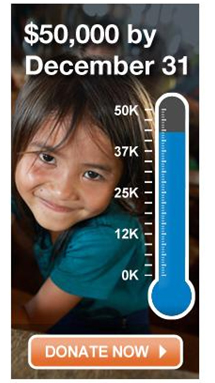 Thermometers. OK, this may seem like a small thing compared to others, but there’s a reason Howard Dean’s fundraising campaign kept on using that bat. Time and time again, I’ve seen the last appeal of an email campaign – one that featured a goal that was just a little bit out of reach – out-raise earlier appeals by 5x. It’s in our nature to want to be a part of a success – and to have our donation be the one that put the campaign over the top.
Thermometers. OK, this may seem like a small thing compared to others, but there’s a reason Howard Dean’s fundraising campaign kept on using that bat. Time and time again, I’ve seen the last appeal of an email campaign – one that featured a goal that was just a little bit out of reach – out-raise earlier appeals by 5x. It’s in our nature to want to be a part of a success – and to have our donation be the one that put the campaign over the top.- Talk about the Enemy. Sometimes the best way to mobilize your target audience is by clearly delineating who the antagonist is in your struggle. If you’re Human Rights First, that could be Liz Cheney’s group, “Keep America Safe”. Or maybe it’s Exodus International, the organization that built the “cure gays” app that Apple allowed onto its app store.
- Report back. There’s nothing worse than being asked to do something, getting excited about it, and then after investing your time, energy and money, never finding out what actually happened. Don’t make this mistake. It’s especially important to give supporters information about what happened during advocacy campaigns particularly if you were successful!
The goals we’re trying to achieve may change. We find new tools to use, and new ways to organize. But the core elements and strategies that make a campaign successful remain the same.

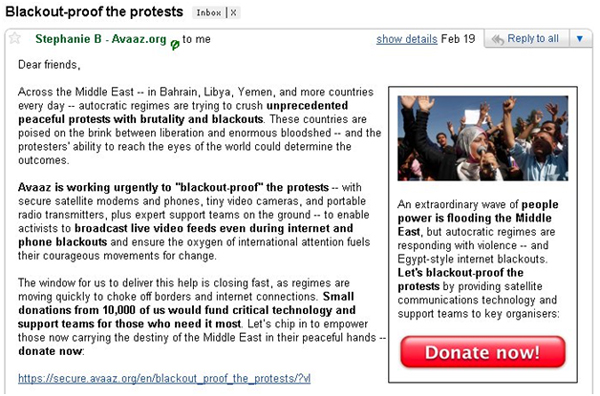
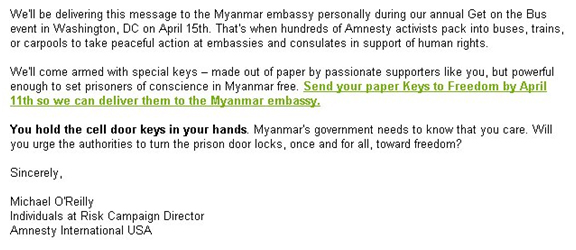
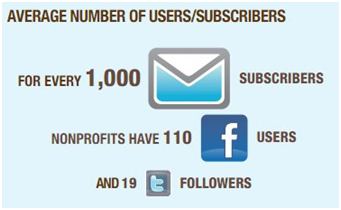
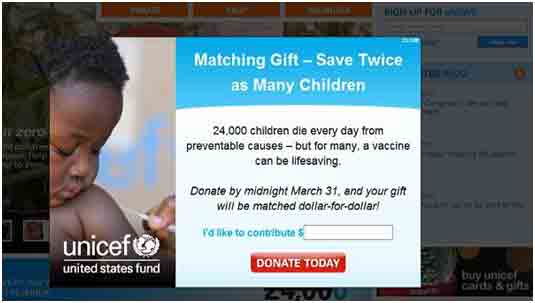
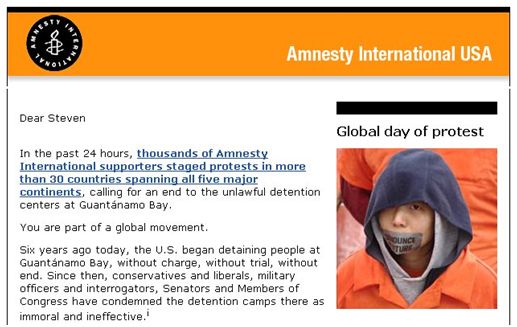
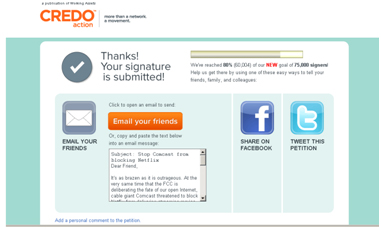
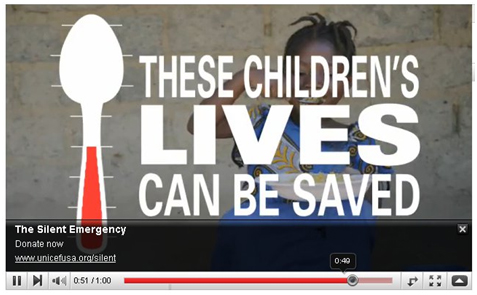
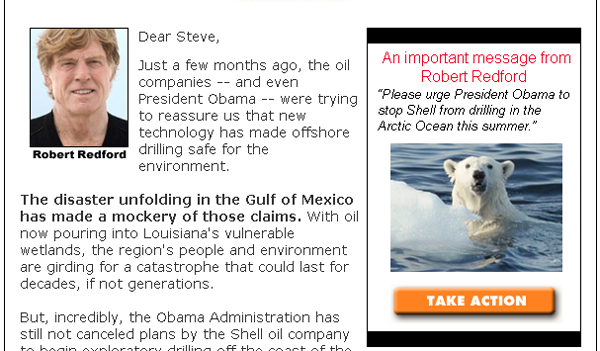
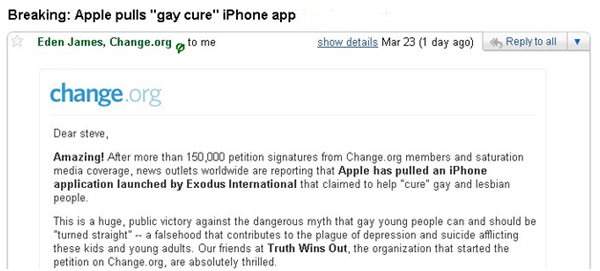
This is so helpful for organizations that are looking to launch online campaigns. Great visual examples! Obviously, there needs to be a commitment to online fundraising and an upfront investment in a strong website and campaign design. I will certainly share with my clients. Thanks.
This should be required reading for all nonprofit marketing and fundraising professionals. We’ll share it widely. Thanks for the well-written post.